Introduction
E-commerce replatforming is a strategic move that can drive business growth by enhancing the online shopping experience and adapting to the evolving digital landscape. With consumers increasingly relying on online shopping, retailers must craft digital experiences that stand out and provide valuable content. A multifaceted approach, including thorough product descriptions and search engine optimization, is essential for improved search engine performance.
Selecting the right platform that aligns with operational needs and growth ambitions is key. Replatforming may be triggered by declining sales, customer feedback, or the emergence of new competitors. Financial considerations, such as the initial investment and long-term profitability, play a crucial role in the decision-making process.
Addressing technical challenges, including slow page load times, is essential for providing a seamless user experience. An outdated system can limit marketing strategies, making replatforming necessary for leveraging modern tactics like personalization. Successful replatforming involves thorough planning, customization, and configuration to create a platform that caters to unique brand and operational needs.
Maintaining SEO performance during migration is crucial to safeguard organic rankings and traffic. Rigorous testing and quality assurance are necessary to ensure platform reliability and performance. Post-launch monitoring and optimization through real-time analysis of key performance indicators allow businesses to enhance the customer journey and stay ahead of evolving trends.
By following a comprehensive checklist and involving stakeholders, businesses can navigate the replatforming process successfully. Contingency planning and troubleshooting are essential to address unexpected challenges that may arise. In conclusion, e-commerce replatforming is a strategic transformation that requires careful consideration of various factors to ensure a seamless transition and position the platform for future success.
Why Replatform Your Ecommerce Site?
E-commerce replatforming is a strategic move that can catalyze business growth by enhancing the online shopping experience and adapting to the evolving digital landscape. With consumers increasingly starting their shopping journey online, a compelling and well-optimized digital presence is paramount. In fact, shoppers now habitually compare products, price points, and value online before even considering a store visit.
To engage these savvy shoppers, retailers must craft digital experiences that not only stand out in a crowded marketplace but also provide valuable content that answers potential questions upfront.
Data shows that simply listing products with a focus on keywords is outdated. Instead, a multifaceted approach that includes thorough product descriptions, local listing pages, and search engine optimized pages is essential for improved search engine performance. Retailers must leverage schemas and SEO strategies to capture consumer attention early in the buying process.
As e-commerce platforms like Shopify and Square evolve, offering more integrated solutions for both online and in-store sales, businesses face a new set of challenges at each growth stage. The key is selecting a platform that aligns with your operational needs and growth ambitions. This means considering factors such as inventory management, point of sale integration, and the flexibility to configure products to match your sales channels.
Furthermore, the adoption of unified inventory visibility has become a fundamental component for retailers. This approach enables a seamless omnichannel experience, allowing customers to shop in-store, have items delivered to their home, or pick up at a nearby location, with the added convenience of easy returns regardless of the purchase origin.
Startups are at the forefront of e-commerce innovation, constantly exploring new ways to enhance the online shopping experience to meet changing consumer habits. As these innovations continue to unfold, e-commerce businesses must stay informed and agile, ready to integrate new features that will keep them ahead of the curve and resonate with their target audience.
Common Issues That Trigger Replatforming
Recognizing the need for replatforming in ecommerce is essential to maintain competitive edge and meet evolving market demands. The catalysts for considering a replatforming strategy can be varied, ranging from declining sales revenue and shrinking market share, to customer feedback requesting improvements, personnel turnover, and the emergence of new competitors. It's crucial to monitor these indicators continuously and understand their potential impact on customer behavior and, consequently, on your business.
Ecommerce is rapidly evolving, with the industry forecasted to reach a staggering $6.3 trillion globally this year. In such a dynamic environment, businesses must adapt to maintain relevance. For instance, observability data can signal when it's time to replatform.
With self-ordering systems in quick-service restaurants generating terabytes of data daily, it's evident that massive data volumes can hinder performance analysis. This underscores the importance of an agile ecommerce platform capable of handling such data efficiently.
Furthermore, the right ecommerce software can transform your business operations, ensuring a seamless digital experience for customers. Prioritize selecting a future-proof, scalable solution that can support international expansion and provide the necessary tools for swift innovation. Also, consider the total cost of ownership, including integration capabilities, uptime, access to advanced features, ongoing support, and implementation costs.
Real-world examples, like Xerox's failure to pivot despite pioneering much of today's computing technology, illustrate the perils of ignoring market shifts and consumer behavior changes. On the contrary, a proactive approach to replatforming, as seen in successful technical stack implementations using Django and Tailwind, can enhance user experience and SEO performance, leading to sustained ecommerce success.
In summary, staying attuned to industry trends, customer needs, and technological advancements is imperative for ecommerce platforms. By doing so, businesses can recognize the right moment to replatform, ensuring they remain at the forefront of the ecommerce landscape.
Financial Issues Related to Your Ecommerce Platform
When considering the transition to a new e-commerce platform, the financial dimension is a pivotal factor that impacts not just the initial investment but also long-term profitability. Replatforming involves various expenses, but it also opens the door to enhanced ROI through more effective operations and potential market expansion. The true cost of building an internal data stack can be substantial, especially in the face of the rapid evolution of vertically integrated platforms.
For instance, the rise of platforms like Shopify signifies a shift toward bundled services that streamline the e-commerce experience, from data management to payment processing. Such integration can lead to cost savings and operational efficiencies.
Financial projections and outcomes hinge on an array of variables, including market trends, technological advancements, and consumer behavior. Companies like Shopify recognize the diverse factors at play—economic conditions, reliance on strategic partnerships, and regulatory environments—all of which influence the financial success of re-platforming initiatives. The financial landscape is ever-changing, and while forward-looking statements provide a framework for expectations, they also acknowledge the inherent uncertainties.
The e-commerce sector is broad and continuously growing, offering businesses opportunities to reach global markets and diversify their offerings across various industries. With this expansion comes the potential for revenue growth, just as the embeddification of payments has reshaped financial transactions by integrating them into wider business platforms. As companies navigate these changes, they must weigh the costs against the benefits of adopting new technologies and operating models that promise higher efficiency and better customer experiences.
Technical Issues Related to Your Ecommerce Platform
Addressing technical challenges in an e-commerce environment is more than a matter of troubleshooting; it's about understanding the nuanced 'easter eggs,' or unexpected issues, that can arise when you're rebuilding an existing platform. The experience is akin to renovating a house while living inside it; unforeseen complexities can surface, particularly when there's no clear documentation of current behavior. This can manifest as slow page load times, which, as Fasthosts reveals, can lead to a significant drop in conversion rates and sales.
For instance, an additional load time of just one second could lead to a loss of £26,379.45 in sales for a small to medium-sized business.
Moreover, modern consumers, who now expect seamless digital experiences, may feel anxious and angry when faced with subpar performance, with 64% indicating a single poor experience during the holiday shopping season could drive them away permanently. Retail Technology Review underscores the need for speed and efficiency, stressing the potential loss of up to £28.4 billion due to slow websites.
Replatforming offers a strategic opportunity to overcome these limitations by embracing new technologies, such as AI, to create more personalized and engaging shopping experiences. Application modernization, through methods like rehosting, refactoring, or rearchitecting, ensures that legacy systems evolve to meet current demands. It's a challenging but necessary endeavor to maintain a competitive edge in today's fast-paced e-commerce landscape.
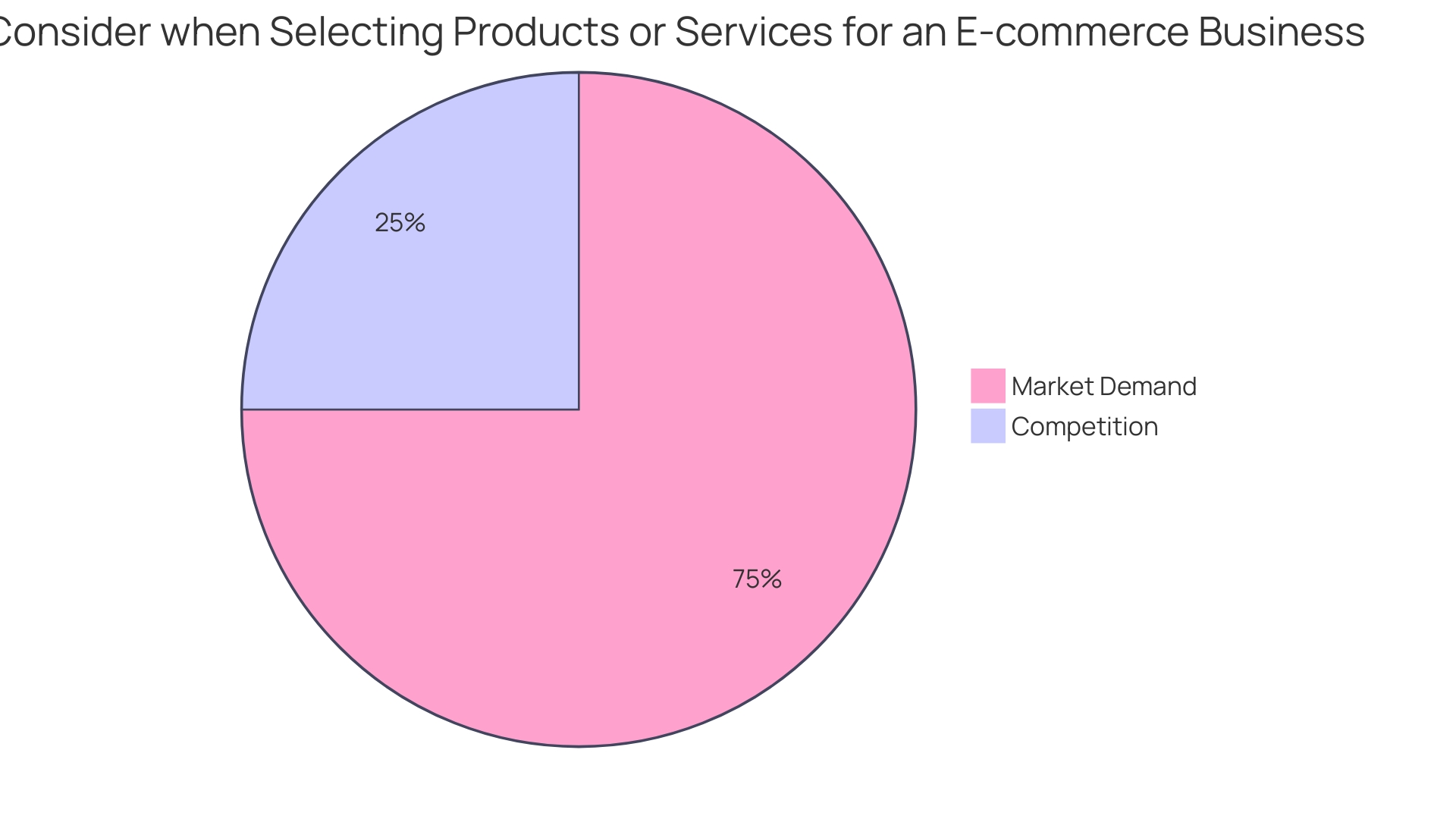
Marketing Issues Related to Your Ecommerce Platform
A robust ecommerce platform is the backbone of your digital marketing initiatives. Encountering limitations due to an outdated system can severely restrict your ability to execute cutting-edge marketing strategies, which might signal that it's time to explore replatforming. For example, Parkhotel Adler, with its legacy technology stack, found it challenging to leverage modern marketing tactics such as segmentation and personalization.
In cases where even basic tasks like isolating loyal guests became a cumbersome process, replatforming can provide a solution that streamlines these operations and enhances marketing efficiencies.
Moreover, the digital landscape is rapidly evolving, with customers expecting seamless omnichannel experiences. Retailers are now recognizing the necessity of unified inventory visibility and the deployment of technologies that cater to a customer's preference for shopping convenience. In today's market, a staggering two-thirds of customers are likely to turn away from brands that fail to provide an integrated omnichannel experience.
In fact, after negative experiences, approximately 80% would switch to a competitor rather than endure dissatisfaction.
A digitally targeted approach through replatforming can be a game-changer, enabling you to connect with customers across every touchpoint, increase sales, and ultimately secure a more profitable customer journey. The transition from single-channel to omnichannel is not just a trend—it's a strategic move to meet and exceed consumer expectations, which are continually shaped by the digital age we live in. As retail continues to evolve, the ability to adapt and offer a superior shopping experience will set apart successful ecommerce operations from those that lag behind.
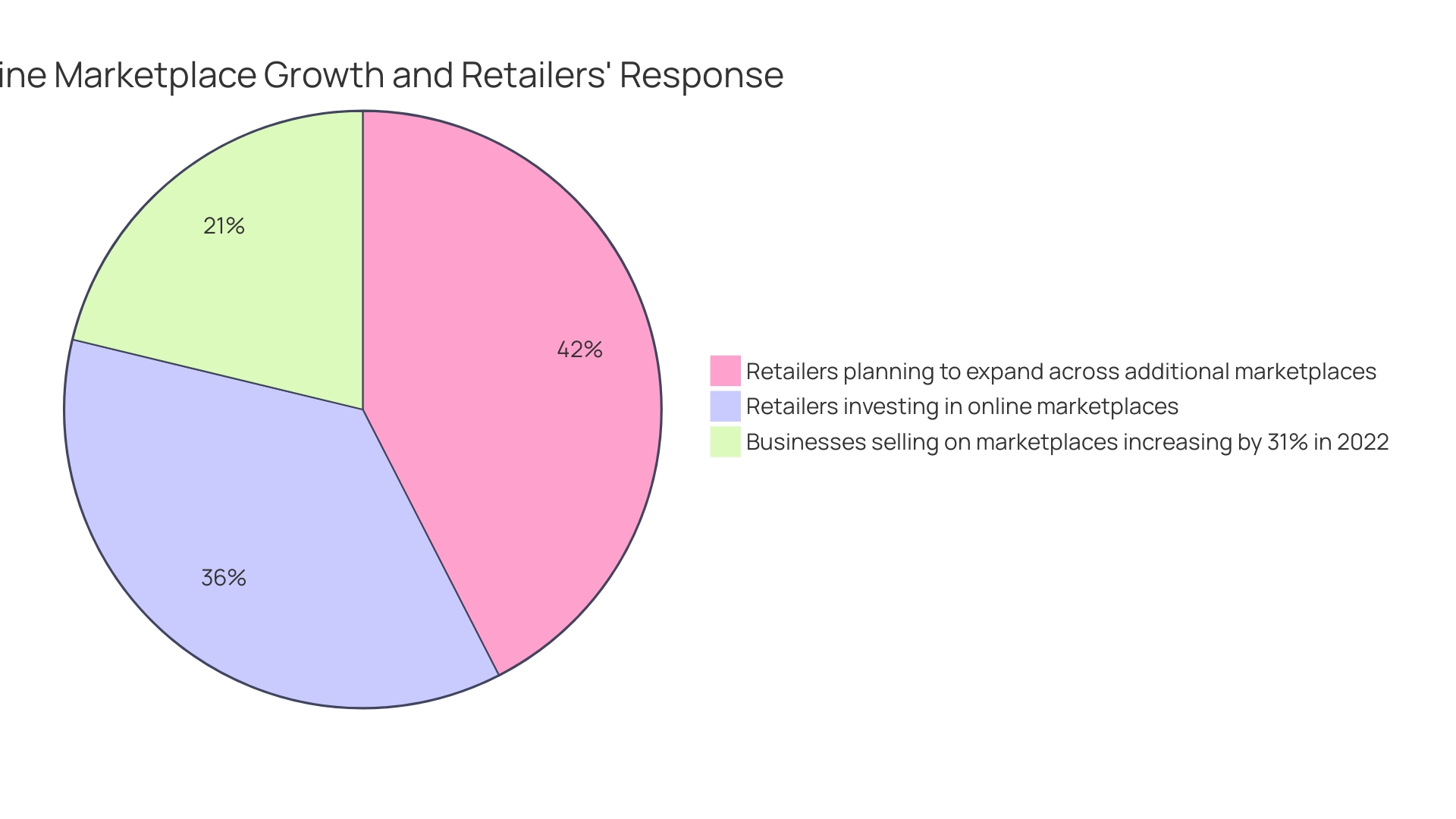
Steps to Successful Replatforming
Replatforming in the e-commerce space is akin to setting the foundation for a house that's built to last amidst the tremors of a rapidly changing digital landscape. As we look at the experiences of leading retailers, such as Pets at Home's successful implementation of one-hour click and collect during the Covid-19 pandemic, we can extract valuable insights. Their integration of physical and digital services transformed not just their business operations but also their customer experience.
Similarly, companies like Filson, in collaboration with Bamboo's growth insights service, have leveraged advanced forecasting models that resulted in nearly perfect alignment with actual e-commerce sales during critical periods such as the holiday season. Such precision in forecasting is instrumental in navigating the dynamic e-commerce terrain.
It's essential to recognize that the terrain is being reshaped by factors such as the surge in digital retail advertising, which is projected to exceed $140 billion globally. This shift demonstrates the importance of a well-thought-out digital strategy that harnesses the potential of retail media advertising, a sector ripe with opportunities.
As we delve into the process of replatforming, it's not just about choosing the right tools and technologies. It's about understanding the nuances of your business model—whether it's dropshipping, wholesale, or consignment—and recognizing the hidden challenges that may arise, much like the 'easter eggs' one might encounter when rebuilding an application.
Moreover, the importance of profitability cannot be overstated. With a focus on higher-margin items, businesses gain the flexibility to forge a path through the competitive e-commerce landscape, all the while ensuring a robust and responsive digital transformation strategy that can withstand the pressures of inflation and other economic challenges.
In this journey, the goal is not just to transition but to transcend—to create an e-commerce platform that is resilient, agile, and ready to cater to the evolving needs of the digital consumer.
Selecting the Right Ecommerce Platform
Selecting an optimal ecommerce platform is a pivotal step in the journey of replatforming. Key factors such as scalability, flexibility, integration capabilities, user-friendliness, and support are critical to consider. Scalability ensures that as your online business grows, your platform can handle increased traffic and transactions without hiccups.
Flexibility allows for customization to meet unique business needs, while robust integration capabilities enable seamless connection with other systems and tools, enhancing operational efficiency. User-friendliness is essential for providing an intuitive experience for both customers and your team, which can drive sales and productivity. Lastly, reliable support options are indispensable for maintaining uptime and swiftly resolving any issues that arise, ensuring smooth operations and customer satisfaction.
By meticulously evaluating these aspects, you'll be empowered to make a strategic decision that supports your business objectives and fosters long-term success.
Data Migration and Content Transfer
Replatforming to a new e-commerce solution involves crucial data migration steps. Successfully moving your product information, customer details, order history, and other significant business data is not merely a technical task; it's a strategic opportunity to refine your online presence. To ensure a smooth transition and preserve data integrity, it's essential to meticulously map and transfer data.
Consider the method employed by MongoDB Relational Migrator, which simplified a complex insurance model from 21 tables into just five collections. A similar approach can be taken when dealing with structured legacy data such as billing or transaction records. For structured data in JSON format, such as policy files or product catalogs, careful planning is needed to ensure seamless integration into the new platform.
Data migration is not just about moving data; it’s about optimizing your data for better performance and insights. A content audit is key here, where you evaluate what content is essential and what is redundant. Analytics can drive these decisions, with metrics like page views, content validity, and user engagement informing the strategy.
As you migrate, keep in mind that your database's architecture plays a significant role. A lesson can be learned from Grafana Cloud, where databases are kept small and manageable, reducing the complexity of the migration process.
Finally, it's critical to recognize that post-migration, the real work begins. It's about ensuring that the technology investments convert to tangible business value over time. Creating a business value model and a benefits narrative can help set clear expectations and maintain alignment across teams during and after the migration process.
Customization and Configuration
Tailoring your e-commerce platform to your company's unique brand and operational needs is not just beneficial—it's crucial. By customizing the user interface, you can deliver a consistent brand experience to customers, which is essential in a marketplace where identity stands out. This involves modifying the platform's design, layout, and functionality to ensure a seamless user journey that reflects your brand's ethos and caters to your specific business objectives.
Optimizing the platform further involves configuring payment gateways and shipping options that align with your business model. For instance, consider the label system created for a client with specific editorial needs across different U.S. states. This system allowed for precise document handling and state-specific operations, demonstrating the level of customization that can be achieved for content management.
Similarly, your platform can be tailored to handle transactions and logistics in a way that enhances operational efficiency and customer satisfaction.
Moreover, the integration of advanced stages such as Regulator, Staging, and Integration, as used by companies like IFCO, showcases the importance of a robust content lifecycle on e-commerce platforms. Such stages ensure regulatory compliance, provide testing environments, and facilitate seamless integration with other applications, which are critical elements for maintaining platform stability and delivering a high-quality user experience.
Finally, staying abreast of e-commerce trends is vital. Retailers are increasingly prioritizing in-store technology, as seen in the surge of self-checkout systems. Artificial Intelligence (AI) is also a key player, offering personalized shopping experiences.
By incorporating these trends into your platform, you can position your business at the forefront of e-commerce innovation, much like how startups are revolutionizing the industry.
To sum up, customizing and configuring your e-commerce platform is a multi-faceted process that, when executed effectively, can significantly enhance customer engagement and operational fluidity, preparing your business for future e-commerce advancements.
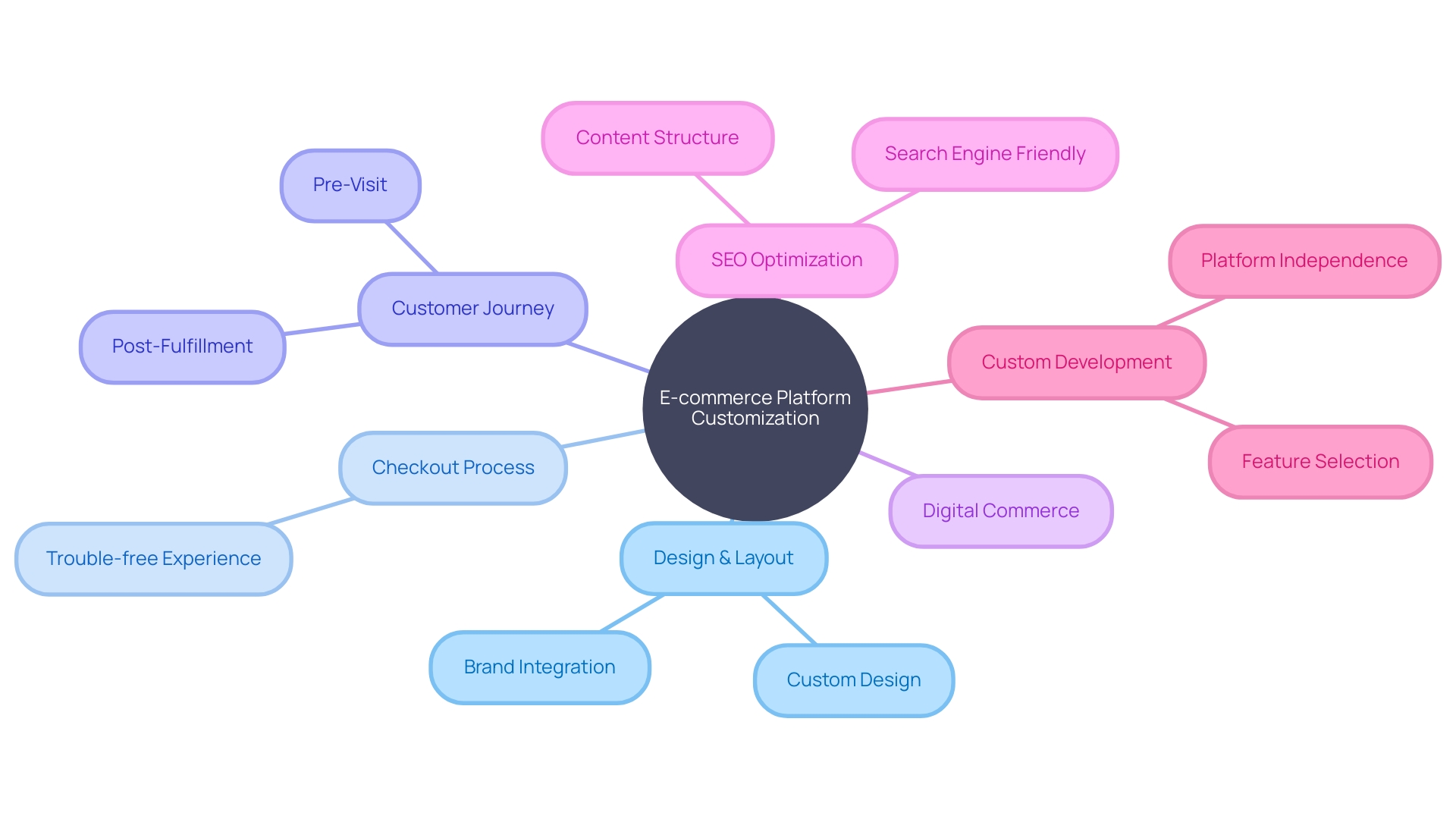
SEO Considerations During Migration
As e-commerce evolves, maintaining the integrity of your website's SEO performance during replatforming is paramount to safeguard your organic rankings and traffic. Replatforming a website is akin to moving to a new digital home, and careful planning is necessary to ensure that nothing valuable is lost in the transition. It's essential to meticulously manage URL structures, meta tags, and redirects to provide a smooth experience for both search engines and users.
When Games Workshop transitioned from games-workshop.com to Warhammer.com, they demonstrated the importance of aligning a domain migration with brand strategy. Similarly, your replatforming process must evaluate and address content quality, ensuring that the information on your site remains original, relevant, and authoritative. A content audit is a critical step in this process, enabling you to determine what to keep, discard, or improve based on user engagement and page views.
Moreover, Google's new Head of Search, Liz Reid, emphasizes the evolving nature of search queries and the need to adapt content to meet these changes, suggesting that post-migration, your site must be prepared to answer more complex and varied user questions. With only a fraction of searches resulting in AI Overviews, it's vital to align your content strategy with organic search to maintain visibility and competitive positioning.
Ultimately, the goal of replatforming should be defined by specific KPIs and measured against your current platform's performance. Considering the number of countries and languages your website caters to, it's crucial to maintain consistency and quality across all versions. Access to analytical tools like Google Analytics and Search Console will be instrumental in managing the historical data and ensuring the replatforming enhances your website’s SEO performance.
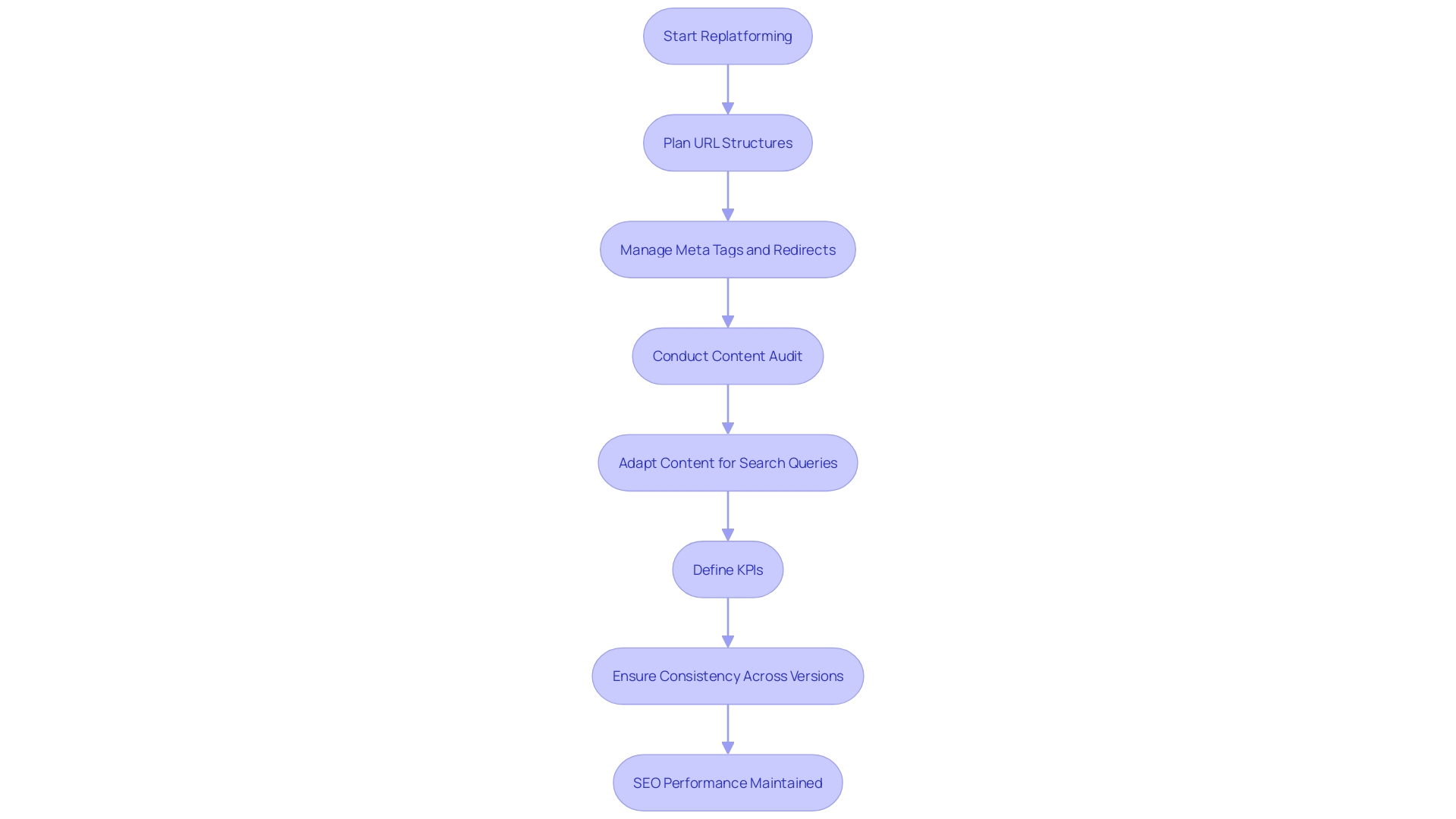
Testing and Quality Assurance
Ensuring the reliability of your new e-commerce platform involves rigorously vetting every aspect of its operation before going live. This involves a multi-faceted approach to testing that includes not just checking functionality but also ensuring that the platform can handle the kind of traffic and usage that peak times bring. For instance, Zalando's team, led by Heinrich Hartmann, has to be ready for immense spikes in activity during events like Cyber Week, requiring thorough performance and stability testing.
The strategy for such testing should begin with a content audit, asking what is necessary for a seamless customer experience, akin to decluttering a house before moving. By employing a 'Shift Left' testing methodology, potential issues can be identified and resolved early in the development cycle. This means starting testing activities at the earliest stage, which has proven to improve quality and efficiency.
The selection of the right tools for performance testing has a significant impact on the process. For example, LoadRunner, JMeter, and WebLOAD offer different features that are suitable for varying technical requirements and budgets. Creating a test environment that closely mirrors the live production environment is essential for accurate performance testing.
Quality assurance is an indispensable part of software development, requiring active defect tracking and a systematic approach to managing quality. Historical practices of manual evaluation of products and services have evolved into today's sector-specific enhanced QA practices. These modern methodologies have been shaped by centuries of development, from medieval artisan guilds to present-day enterprise QA teams, as described by the American Society for Quality.
The effectiveness of these strategies is underscored by statistics from the World Quality Report, which highlight the shift towards automation and the creation of enterprise-wide QA teams as main drivers for shorter and higher quality life cycles. As the software quality and testing landscape continues to evolve, drawing on the experiences of others across industries is vital for doing things better, quicker, and cheaper. The ultimate goal is to deliver an online customer experience that rivals the trust and expertise customers find in-store.
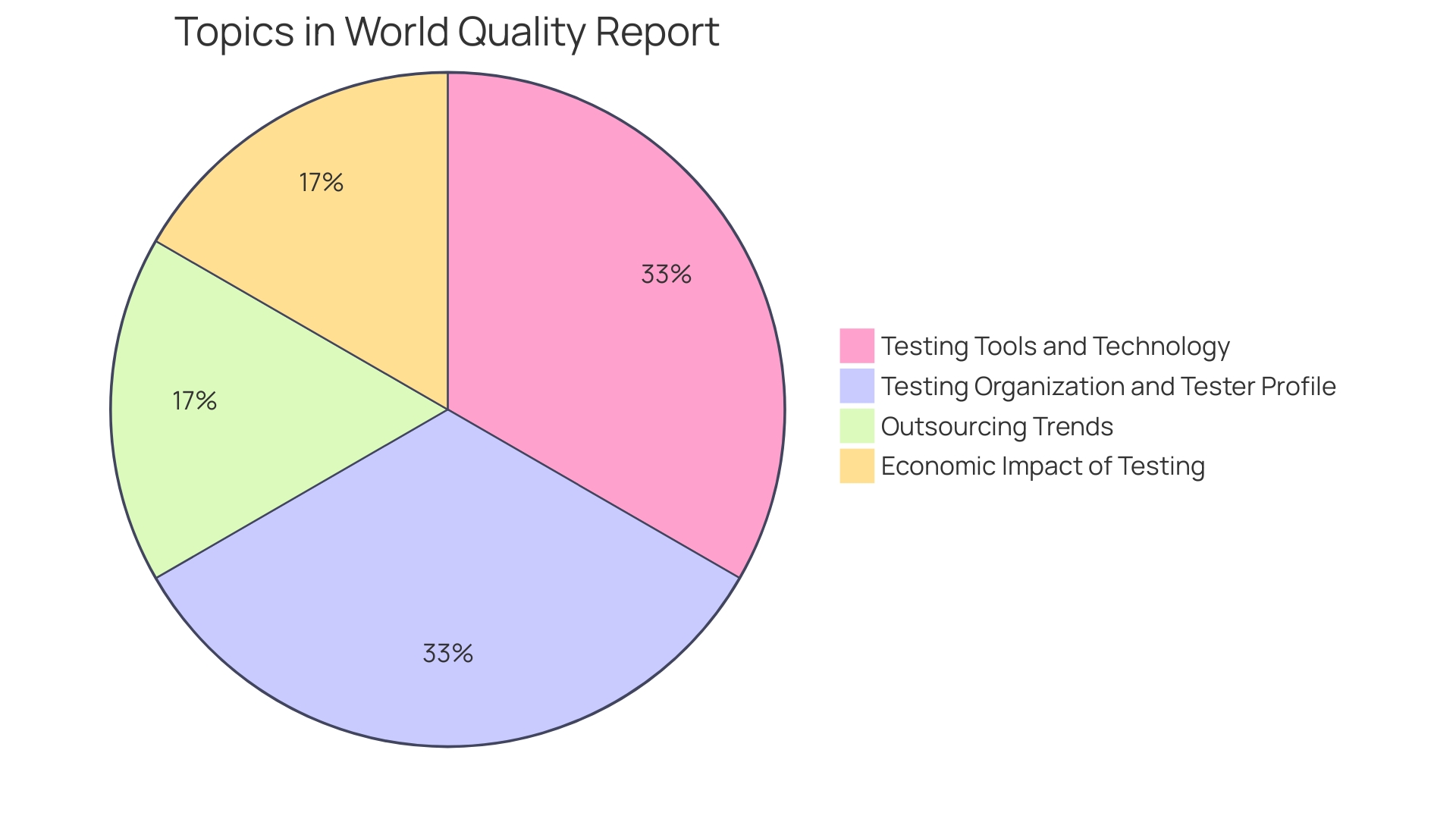
Launch and Post-Launch Activities
Following the launch of a new e-commerce platform, the journey towards success is ongoing. To ensure optimal performance, it's crucial to engage in meticulous post-launch monitoring, similar to the approach taken when debuting a product on platforms like Product Hunt, where trust-building with customers is key. Analyzing user interactions, addressing feedback, and implementing updates become the pillars of maintaining a competitive edge.
Startups and established businesses alike, such as the original online marketplace for independent designers, have experienced the complexities of post-launch activities firsthand. These range from managing shipping logistics to inventory control, each requiring attention to detail and an adaptive approach.
E-commerce is ever-evolving, with innovative partnerships paving the way for new strategies. For instance, major sales events like Amazon's Great Indian Festival demonstrate the importance of timely deals and promotions in attracting and retaining customers. Additionally, inspiring stories from platforms like Flipkart highlight the significance of supporting entrepreneurs in an increasingly digital marketplace.
Current trends, such as the integration of Artificial Intelligence, are revolutionizing the e-commerce landscape, offering personalized shopping experiences that cater to the unique preferences of each customer. These advancements underscore the importance of staying abreast of new technologies and market shifts.
Leveraging data, such as product list interest and quantity discounts, can inform strategic decisions, as seen in the Overview and Product Performance reports from Analytics. This data not only measures campaign effectiveness but also guides site design improvements to facilitate user navigation from product views to purchases.
In summary, a successful e-commerce platform must continually evolve through close monitoring, user feedback, and embracing new technologies to provide a seamless and personalized shopping experience.
Ecommerce Replatforming Checklist
Embarking on the e-commerce replatforming journey means meticulously navigating through a series of strategic steps that are crucial for ensuring a smooth transition and harnessing the full potential of your online presence. This carefully crafted checklist serves as a roadmap, guiding you through the intricate replatforming maze, from the initial planning phase right up to the pivotal post-launch phase.
At the outset, it's essential to establish a solid foundation by selecting a distinctive and memorable business name that resonates with your brand identity and appeals to your target audience. Once you've secured your business name, the next step involves a comprehensive transfer of product data, customer details, order history, and pertinent business information to your new e-commerce platform.
The process transcends mere data migration; it's a golden opportunity to re-evaluate your entire online strategy, streamline operations, and embrace cutting-edge technologies aimed at elevating the customer experience. As you venture into this transformation, consider how Pets at Home leveraged the change management process to introduce one-hour click and collect during the pandemic, or how MCoBeauty's focus on influencer marketing in 2022 played a pivotal role in its growth and expansion plans.
Furthermore, drawing insights from cases like Bamboo's growth insights service for Filson, which resulted in highly accurate e-commerce sales forecasts, illustrates the importance of customizable forecasting models in anticipating and preparing for market trends.
Keeping abreast of the latest trends is paramount, as evidenced by the surge in artificial intelligence applications in e-commerce, revolutionizing personalized shopping experiences. And with the ever-evolving shape of retail influenced by digital technologies, it's imperative to consider the lessons from Digital Leaders who have experienced substantial growth due to their advanced omnichannel strategies.
By adhering to this comprehensive checklist, you'll not only streamline your efforts but also position your e-commerce business to thrive amidst the dynamic digital landscape, much like the success stories of innovative retailers who have navigated similar paths.

Budgeting and Resource Allocation
Creating a realistic budget for an e-commerce replatforming project is a multi-layered challenge that demands careful consideration of several factors. A key realization is that replatforming isn't simply about replicating existing functionality; it's about uncovering and understanding every aspect of the current system, including undocumented features or 'easter eggs' that users have come to expect. These hidden intricacies can significantly impact the scope and cost of a project.
From the outset, it's important to acknowledge the complexity inherent in such projects. As illustrated by real-world experiences, the act of rebuilding an application often reveals unexpected challenges that can escalate efforts and expenses. One must approach budgeting with the understanding that what might seem like a herculean task at first may prove even more demanding as the project unfolds.
Updating website content regularly is a strategic move that can help manage and potentially reduce unnecessary expenses. Keeping content fresh and relevant not only engages users but also prevents the accumulation of outdated elements that could later require a costly overhaul.
When estimating costs, consider the role of technology in value creation and factor in the global trends in IT infrastructure spending. Organizations across industries are investing significant amounts in technology, indicating the critical role it plays in operational success. This trend underscores the importance of aligning your replatforming budget with the strategic objectives of your business.
Automated testing coverage is another crucial component that can influence both the duration and cost of replatforming. High test coverage can streamline the upgrade process, minimizing manual testing and the associated labor costs. It's vital to analyze your application's test coverage early on to gauge the potential impact on your project's budget.
In summary, budgeting for e-commerce replatforming is not just about allocating funds; it's about comprehensively understanding your current system, staying abreast of technological trends, and optimizing your resources to navigate the hidden complexities of rebuilding an application.
Stakeholder Involvement and Communication
E-commerce replatforming is not just a technological upgrade; it's a strategic transformation that necessitates the collaboration of diverse stakeholders within an organization. To navigate this complex process successfully, it is essential to understand the roles of customers, users, and constituents in the context of the project. Customers, who fund the project, may not directly interact with the platform, while users are the ones engaging with it regularly.
Involving both customers and users in the decision-making process can provide invaluable insights into the platform's requirements and potential issues.
For instance, the Ford Foundation recognized the need for change when their content production outpaced the capabilities of their old CMS. This realization led to a collaborative effort to overhaul their system, with a focus on improving workflow to support their increased content output.
Another example comes from the UK Government's GOV. UK project, where a bold decision to perform a trial run on the live website, rather than waiting for a fully-functional test environment, allowed for a focused approach and early identification of minor issues. This strategic move built confidence among stakeholders and paved the way for a successful launch.
Similarly, Satyendra Kumar's approach to a multipartner strategy underscores the importance of early and ongoing collaboration. By creating a comprehensive playbook and prioritizing applications based on business needs, his team was able to blend automation with manual processes, ensuring a secure and efficient transition.
These case studies are complemented by insights from the insurance sector, where blockchain technology is being leveraged to streamline the claims process. This innovation demonstrates the potential benefits of adopting cutting-edge technologies to enhance user experience and operational efficiency.
In the realm of communication technology, avoiding common pitfalls is crucial. Effective communication among stakeholders is key to preventing mistakes and fostering a successful replatforming journey.
Lastly, Eric Siegel's extensive survey of data science professionals highlights the diverse challenges faced in the industry, emphasizing the need for a strategic approach to replatforming that addresses the specific needs and goals of an organization. By heeding these lessons and fostering stakeholder collaboration, e-commerce leaders can embark on a replatforming journey that is not only smooth but also positions their platforms for future success and growth.

Contingency Planning and Troubleshooting
E-commerce replatforming is a critical and complex process, involving the transition of product data, customer information, order history, and other essential business data to a new eCommerce solution. This is often necessary to overcome the limitations of current platforms and to empower growth and innovation. However, despite meticulous planning, unexpected challenges can emerge, necessitating the need for robust contingency planning and troubleshooting techniques.
Mitigating risks during replatforming begins with a comprehensive evaluation of your current platform's limitations and a strategic selection of a new platform that aligns with your business goals. For instance, Grafana Cloud employs a database architecture where each customer has a dedicated database, ensuring streamlined data management during transitions. This kind of architecture can be pivotal in reducing the risks associated with data migration.
Moreover, understanding the detailed nuances of the current system is crucial. As one industry expert remarked, rebuilding an application often uncovers 'easter eggs,' or unexpected hidden challenges that lack formal documentation of current behavior, requiring an acute attention to detail during the migration process.
Indira's experience emphasizes the importance of a thorough inventory assessment prior to migration, which can help in identifying underutilized resources and focusing efforts on critical applications. Similarly, IFCO's partnership with Rackspace Technology showcases the value of leveraging external expertise in navigating the replatforming landscape, particularly for smaller IT departments.
From a broader perspective, the retail industry continues its steadfast progress in technology adoption despite economic uncertainties. With self-checkout systems leading the transformation, and AI and ML unlocking new potentials, it's clear that the replatforming process is more than just data migration—it's an integral part of a strategic business overhaul designed to enhance the customer experience.
To effectively handle unexpected situations and minimize business disruptions, it's essential to establish backup plans and develop a nuanced understanding of both your technology and the potential pitfalls. This approach is reflected in the findings of extensive surveys and studies, which highlight the significant resources devoted to application software maintenance and the complexities of software lifecycle management. By preparing for the unexpected and focusing on detailed planning, businesses can navigate the challenges of e-commerce replatforming and emerge with a robust, future-proof platform.

Post-Launch Monitoring and Optimization
Activating a new ecommerce platform is just the beginning of a nuanced journey to digital success. Post-launch, it's crucial to engage in vigilant monitoring and diligent optimization of the platform to secure and amplify positive outcomes. By focusing on the real-time analysis of key performance indicators (KPIs), such as conversion rates and average order value, businesses can gain insights into the effectiveness of their strategies.
Moreover, understanding user behavior through data-driven analytics offers a roadmap for enhancing the customer journey.
To exemplify, Spotify's approach to expanding their podcast platform highlights the significance of setting precise performance goals and leveraging engagement data to inform iterative developments. Their dedication to analyzing listener interactions paved the way for the successful integration of video podcasts, which saw a rise in engagement over three years. Similarly, by harnessing the power of analytics, as demonstrated by Shoplazza, retailers can identify optimal timings for promotions, resulting in increased sales and customer satisfaction.
E-commerce is constantly evolving, with artificial intelligence reshaping the landscape by personalizing shopping experiences. A current report surveying over 200 retail executives sheds light on key trends such as the adoption of in-store technology and the prioritization of self-checkout solutions. This reflects a broader commitment among retailers to embrace innovative technologies that address present-day challenges, including staff retention and the integration of AI and machine learning.
To ensure ongoing progress, e-commerce directors should also incorporate customer feedback into their optimization efforts. As the digital marketplace continues to evolve, informed by the dynamism of startups, staying abreast of the latest trends and technologies is non-negotiable. It's about fostering a culture of continuous learning, where insights into customer preferences and market shifts inform strategic pivots.
Ultimately, the agility to implement and iterate enhancements based on a comprehensive understanding of e-commerce dynamics will drive sustained growth and user satisfaction.
Conclusion
In conclusion, successful e-commerce replatforming is a strategic transformation that requires careful consideration of various factors. Craft engaging digital experiences with valuable content to stand out in the crowded marketplace. Select a platform that aligns with operational needs and growth ambitions.
Address technical challenges and outdated systems to provide a seamless user experience. Leverage modern marketing tactics like personalization through replatforming. Maintain SEO performance during migration to safeguard organic rankings and traffic.
Rigorous testing and quality assurance ensure platform reliability and performance. Post-launch monitoring and optimization enhance the customer journey and stay ahead of evolving trends. By following a comprehensive checklist and involving stakeholders, businesses can navigate replatforming successfully.
Embrace this opportunity to position your business for long-term success in the e-commerce landscape.
Take the first step towards long-term success in e-commerce!





